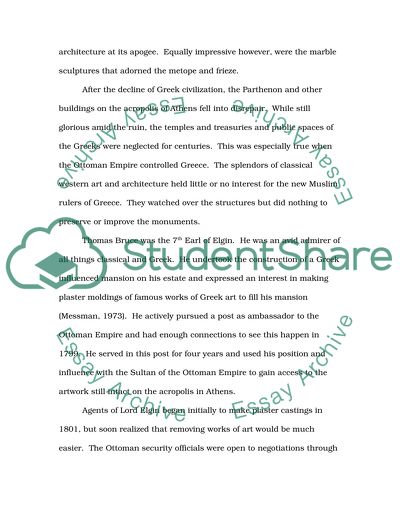The Parthenon Marbles Essay Example | Topics and Well Written Essays - 750 words. Retrieved from https://studentshare.org/literature/1444834-the-parthenon-marbles-for-art-history
The Parthenon Marbles Essay Example | Topics and Well Written Essays - 750 Words. https://studentshare.org/literature/1444834-the-parthenon-marbles-for-art-history.


